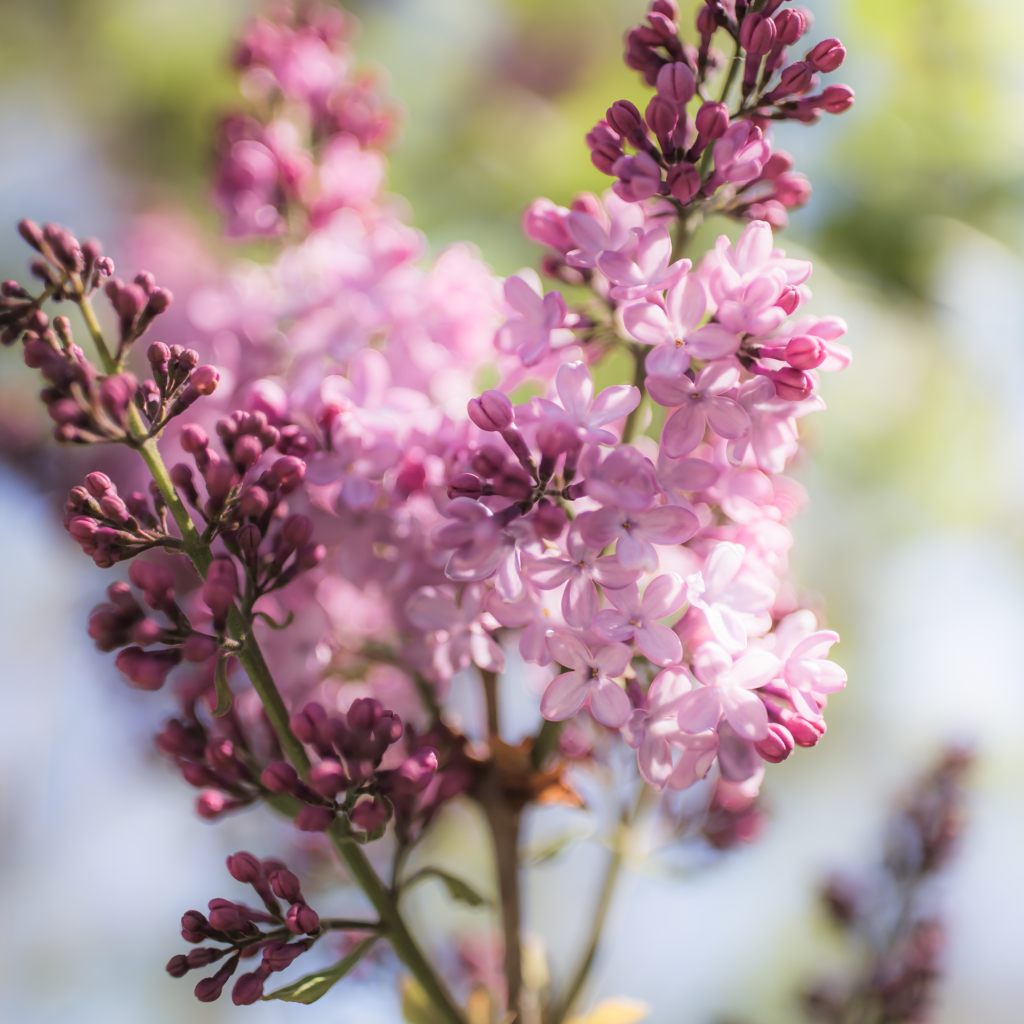
Today marks 43 days at home. Am I hanging in there? Yes. Am I a people starved, in need of hugging and loving, and belly laughs with friends? Also yes. I wrote yesterday how all this time home has reconnected me to my macro flower photography roots. A blessing in all the isolated madness. Well this weekend my lilacs took their first step out onto the springtime stage. They are prepping for their proper debut this week. Before I trim them up to bring their unmistakable scent inside I will get my photo fill.
Instead of the 100mm macro lens I went with my beloved 35mm. It’s a versatile lens, one that affords landscapes, portraits, and even a floral still life. It’s the lens you take along if you can only have one. She’s a show off, too; striking sharpness wide open. Allowing the photographer to execute dramatic bokeh balanced against areas of sharp focus. It’s a dream to shoot and super fast. All I had to do was frame up a pleasing composition in decent sunlight and let the glass do the rest.
Love and lilacs. Lilacs and love. Pink and purple pastel beauties surpassed in sweetness only by their unmistakable perfume. Dating back to the ancient world purple marked out royalty. It wasn’t long before they cornered the market in total. In many cases outlawing its wearing to non-royals. And the Byzantine’s, well they were flat out obsessed with the color. To the block quote:
The reason for purple’s regal reputation comes down to a simple case of supply and demand. For centuries, the purple dye trade was centered in the ancient Phoenician city of Tyre in modern day Lebanon. The Phoenicians’ “Tyrian purple” came from a species of sea snail now known as Bolinus brandaris, and it was so exceedingly rare that it became worth its weight in gold. To harvest it, dye-makers had to crack open the snail’s shell, extract a purple-producing mucus and expose it to sunlight for a precise amount of time. It took as many as 250,000 mollusks to yield just one ounce of usable dye, but the result was a vibrant and long-lasting shade of purple.” — History.com
Thanks to nature purple is for the people; no reserved for the privileged few who managed the singular feat of being born of a certain line. Mother Nature loves all, blind to class and caste, and bestows her regal colors across the lands of even her most humble denizens. Love and lilacs always win and her purple is ours to behold.
Interested in buying? Purchase
